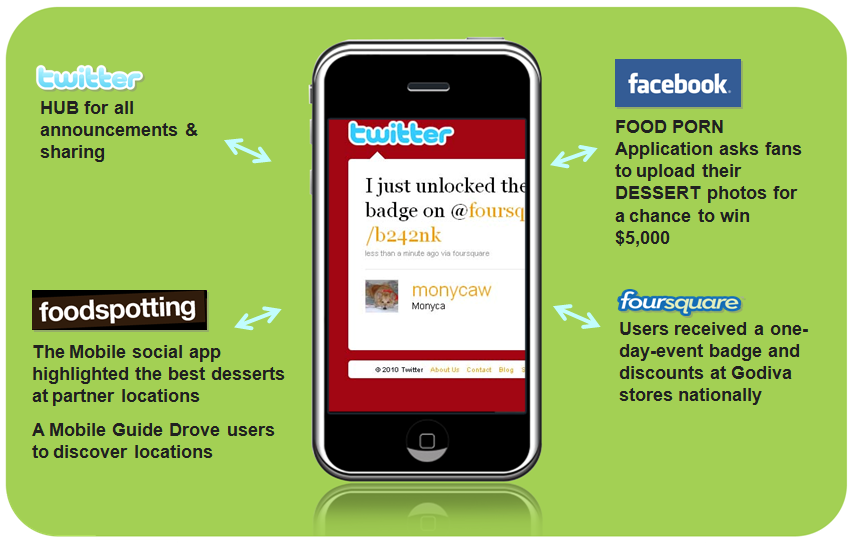Social Media & Its Many Forms
Beth Uyenco, MICROSOFT ADVERTISING
Internet usage can be bucketed into:
Information, communication, creation, transaction, entertainment, and surfing.
Communication counts for 1/3 of the communication on the internet. Email is still the most used type of social media. People who have web phones tend to communicate more on the internet. Behavior on the internet is very routine. Most internet activity in the US is in the morning, and communication is a large portion of this. Even if you aren’t involved in social media personally, you should at least be listening.
How can marketing conversations involve a way for people to co-create?
Need owned and paid media to generate owned media.
Amp Up Your Social Media Strategy Today
Raj Misra, WUNDERMAN
What should you think of when you are beginning your social media campaign?
- -Who is talking about your product?
- -How is social marketing delivering a robust ROI?
- -Are you optimizing your campaigns?
- -Can you do it better?
Office 2010 Launch
Office generates over $11 billion in revenue for Microsoft. They look at social media through three different platforms: bought, owned, and earned. With “Earned,” they have fans they can mobilize to become customers. From there, they have individuals talk about their products and bring them into new New Media channels. With Microsoft, many communities already exist. They assess the pre-existing communities and use those to connect with their customers.
- • Social media is a mature marketing channel. There are a lot of silent participants. Build strategies that acknowledge both vocal participants and the observers.
- • If you have an existing community, don’t try to build a new one. If people are already talking about your brand, look there first and see if you can translate it to an active community.
- • Timing is important
- • Not all audiences are the same
- • Since social media is visual, you can measure and optimize things
The State of Media Democracy
Alma Derricks, DELOITTE CONSULTING LLP

Stepping back and looking at the overall media picture will help us embrace social media more.
Television it’s still a very strong medium. It’s the strongest at 71%. When people are conversing on other platforms, they’re talking about television. Advertising from this medium is also very influential.
SmartPhones: It’s one of the top three most valued products. They are catching on in the millennial consumer group. Many consumers use their SmartPhones instead of laptops when they’re traveling.
Print Magazines: All print isn’t the same. The newspaper is on the decline but magazine subscriptions remain strong across the past five years and over all demographics groups.
Social Media Strategy Essentials
Holly Zoba, SIGNATURE WORLDWIDE
Seven steps to a strategic plan:

1) Identify objectives – customer retention, employee satisfaction, etc?
2) Ask (and listen) to all parties involved (surveys, meetings, tweet deck)
3) Create your voice & teams (how, when and why are your consumers using social media?)
4) Assign social media tools to your leaders
5) Hold a problem solving/brain storming session
6) Create an action plan
7) Execute, evaluate progress, measure results and begin again
Capitalize on the Platform That Fits Your Practice
Megan Smith, OVATION
When defining your social media strategy, define how you wan to use your “Big 3”. Ideas from Ovation for the Big 3 – humanizing the corporate brand, marketing b-to-c, marketing b-to-b, and customer support.
Smith prefers to use the native platforms when monitoring and working with social media across Twitter, LinkedIn, Facebook and other social media tools. Engagement is best done with your customers are you know what goals you have in terms of social media.
















